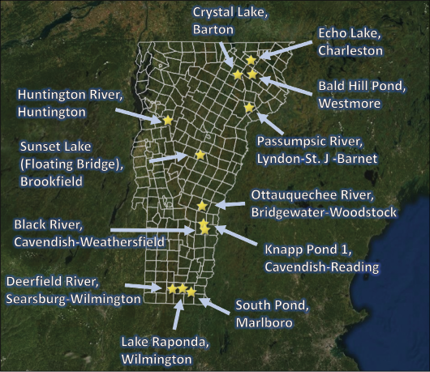Stocking the Eagle Lake Strain
Rainbow Trout Strain Evaluation: Final Year to Contribute
2024 marks the final year of our rainbow trout strain evaluation, and we are looking for anglers to continue to contribute important data.
For the past three years, we have been stocking two different strains of rainbow trout side by side into twelve waterbodies in Vermont to see how a new hatchery-raised rainbow trout — whose ancestors are from the deep, cold Eagle Lake — compares to the strain we have stocked since 2008, the Erwin-Arlee strain. The strain caught more frequently by anglers fishing these waterbodies will be used in the future for all our rainbow trout stockings in the state. So far, over 50% of all fish used in the study have been submitted by anglers.
Want to contribute to the strain evaluation? It's as easy as going fishing at one of the 12 waterbodies where we are stocking both strains and snapping a pic of the ventral fins of any rainbows you land. Eagle Lake fish will be clipped on the left, and Erwin-Arlee fish will be clipped on the right. Send us a shot of your catch along with a few other details, and your fishing trip will help influence the future of Vermont’s rainbow trout stocking program.


Sauger or Walleye?
Please Learn the Difference


